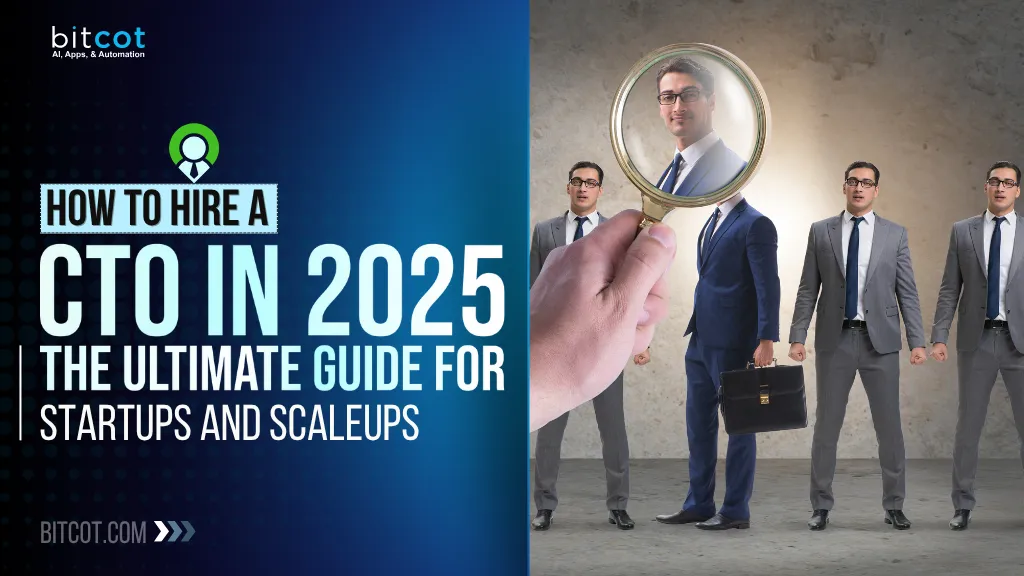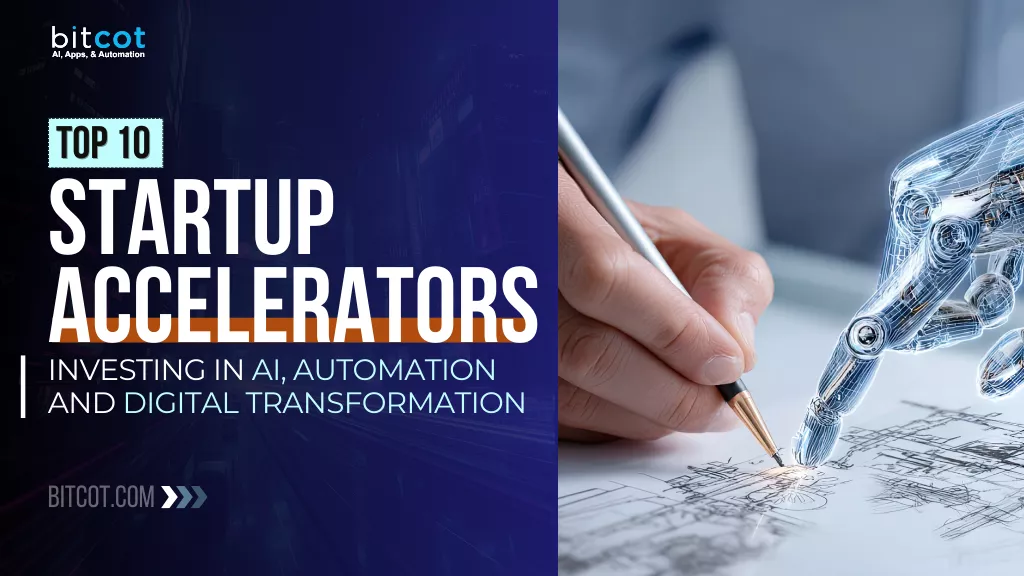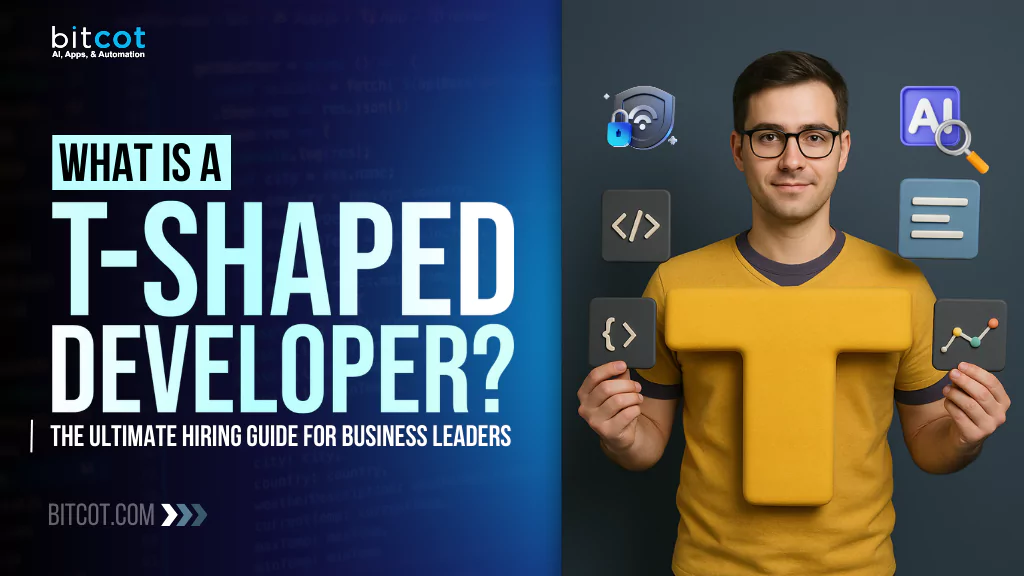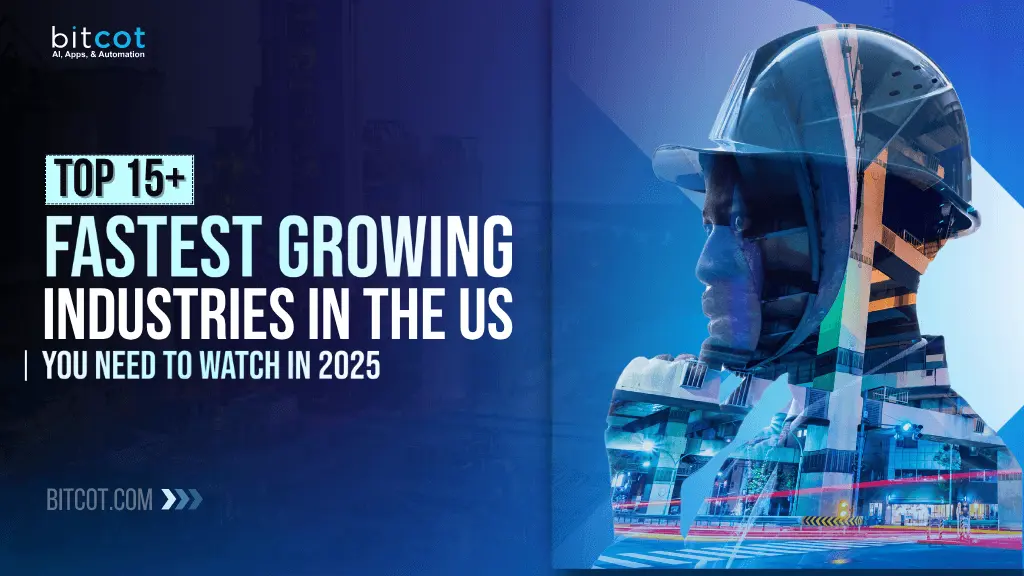
What if your next hire could determine the life or death of your startup?
You’ve got the vision. The product idea. Maybe even traction. But without the right technical leadership, your momentum stalls, bugs multiply, and deadlines slip.
In today’s tech landscape, where AI and ML disrupt markets overnight and scalability determines survival, one hire can either build your future or break it: the Chief Technology Officer (CTO).
Whether you’re working with a web app development team or evaluating DevOps consulting partners, hiring the right CTO ensures your tech strategy is sound from day one.
Are you struggling to find someone who understands your mission and has the technical depth to execute it? Wondering whether you need a technical co-founder, a fractional CTO, or just a strong engineering lead?
This uncertainty is normal. But waiting too long–or choosing wrong–can sabotage everything you’ve built.
Hiring a CTO is no longer just about tech skills. It’s about finding someone who aligns with your stage, shares your product obsession, and can lead remote teams, integrate AI, and scale responsibly. Yet, too many founders rely on luck or rushed interviews.
You already know this. You’ve read about product-market fit, MVPs, cloud infra, and AI development strategy. But if you know all this—why don’t you have the right tech leader yet?
Whether you’re a non-technical founder, solo entrepreneur, or scaling fast, time is not on your side. Each week without the right tech lead costs you product momentum, funding, and market share.
This guide provides a proven, step-by-step strategy—built for 2025—to help you hire the right CTO. We’ll cover models, mistakes, sourcing strategies, and interview tactics used by the smartest startup teams today.
Let’s dive in—because every sprint without the right leadership puts your startup at risk.
Why Hiring a CTO Is Crucial for Your Startup in 2025
Technology is no longer just an enabler. It is your product, your moat, your scalability engine. In 2025, a CTO isn’t just a coder-in-chief. They are the tech visionary, AI strategist, security guardian, cloud architect, and most importantly—your partner in long-term growth.
The modern CTO needs to:
- Build scalable, cloud-native, API-first architecture.
- Design AI agent development workflows or choose the right models.
- Ensure data compliance (GDPR, SOC2, HIPAA).
- Secure your product from cyber threats.
- Lead remote-first engineering teams across time zones.
You need someone who gets both the code and the company.
Before you rush to hire, it’s important to understand why traditional hiring might not work anymore.
Why Traditional Full-Time CTO Hiring Doesn’t Always Work Anymore
Let’s talk realities:
- High Salaries: The average full-time CTO in the U.S. commands $200,000-$400,000/year, plus equity (10-20% for early stage, 1-5% for later stage).
- Wrong Fit Risk: Founders often rush into hiring someone with a great resume but the wrong stage experience. Someone who scaled Uber’s infra might not enjoy building your MVP.
- Burnout or Turnover: CTOs without cultural alignment or autonomy don’t last. A mis-hire can cost you 6-12 months of momentum.
- You Might Not Need Full-Time Yet: Many early-stage companies only need 20-30 hours/month of high-level guidance.
So what’s the alternative? Let’s explore modern, flexible options.
CTO Hiring Models That Make Sense in 2025
Here are four CTO hiring models that balance cost, speed, and expertise:
1. Fractional CTO
A part-time strategic tech leader who guides your architecture, hires devs, aligns tech with business, and sets process.
Best for: MVP-stage startups, seed-funded companies, or non-tech founders.
Why it works:
- Pay hourly or monthly retainer (e.g., $5,000-$15,000/month).
- Get top-tier talent for 10-25 hours/week.
- Build foundations right without full-time risk.
Fractional CTOs let you get executive-level insight without burning through your budget.
2. Virtual / On-Demand CTO
A remote CTO you engage for specific milestones: AI model selection, security audit, team setup.
Best for: Project-based work, pre-fundraising, or pilots.
Why it works:
- Bring expertise when needed.
- Ideal for lean teams working on time-sensitive deliverables.
This option is perfect when your tech decisions are critical but not constant.
3. Interim CTO
A full-time CTO on contract (typically 3-12 months), often to fill leadership gaps or during transitions.
Best for: Post-Series A scaling or post-CTO exits.
Why it works:
- You get hands-on leadership without long-term lock-in.
- Lets you continue shipping and hiring while you search.
Great for when you can’t afford to pause your product evolution.
4. Outsourced Tech Partner / CTO-as-a-Service Agency
Some agencies offer complete CTO services, including roadmap planning, hiring devs, setting up AI pipelines, and more.
Best for: Startups without internal tech leadership or hiring capabilities.
Why it works:
- Fast ramp-up.
- No equity or hiring required.
- Expert oversight across tech + process.
Agencies like a modern AI automation agency offer speed, systems, and support—especially for non-technical founders.
How to Choose the Right CTO Model for Your Startup
Ask yourself:
- Do I need architecture and strategy or day-to-day execution?
- Is this a long-term role or milestone-based?
- Do I want to build an internal team or stay lean?
- Can I afford $20K/month+ for full-time?
If you’re not 100% sure, start with fractional or project-based. You can always scale up.
Making the right choice early can save time, money, and costly pivots.
Key Traits to Look for When Hiring a CTO
The right CTO is a blend of tech leader, business thinker, and culture builder. Here’s what to evaluate:
1. Stage Match
- Pre-product: Look for fast prototyping, API integrations, MVP scoping.
- Post-product: Look for scalability, CI/CD, microservices.
- Scaling: Focus on team building, hiring, and architectural evolution.
2. AI Experience
- Familiar with deploying LLMs like Mistral, Gemini, Claude.
- Can weigh open-source vs proprietary.
- Knows MLOps, retraining, fine-tuning, and responsible AI practices.
3. Remote Team Leadership:
- Strong with async work, documentation, and collaboration.
- Has hired and led devs across geographies.
4. Security + Compliance
- Knowledge of OWASP, SOC2, GDPR, HIPAA.
5. Communication
- Can explain technical concepts clearly to non-tech founders or investors.
- Willing to say “no” when needed.
These traits are non-negotiable when you’re building long-term tech leadership.
The Modern CTO Hiring Process: Step-by-Step
Hiring a CTO isn’t just about tech interviews. It’s about alignment. Here’s a high-trust process based on industry best practices:
Step 1: Define the Role with Precision
- Responsibilities: Will they own product direction, scaling architecture, team building, or fundraising?
- Role Type: Are you hiring a technical co-founder, an operational CTO, or a short-term strategic tech lead?
- Scope: Will this CTO manage engineers, own delivery timelines, or engage with VCs?
Tip: Align scope and expectations to your company’s current phase—pre-MVP, seed scaling, or post-Series A.
Step 2: Prioritize the Must-Have Skills and Experience
Break it into clear categories:
- Technical: Proficiency in AI/ML deployment, LLM integration, full-stack development, cloud services, cybersecurity.
- Leadership: Experience building and leading dev teams, handling burnout, scaling culture.
- Product Vision: Strong understanding of product-market fit, iterative roadmapping, agile execution.
Step 3: Select the Most Suitable Hiring Model
Evaluate what’s realistic for your budget, timeline, and phase:
- Full-time CTO (if you’re post-product market fit)
- Fractional CTO (great for MVP or strategy validation)
- Technical Co-founder (if you’re early and need deep ownership)
- CTO-as-a-Service (ideal for launch-phase or lean teams)
Most lean startups now begin with a fractional or outsourced CTO to stay agile and test fit.
Step 4: Source Candidates from the Right Channels
Use diversified outreach strategies:
- Technical communities (GitHub, Stack Overflow, IndieHackers)
- Startup platforms (YC Startup School, AngelList, Product Hunt)
- LinkedIn (filter for VP Eng, CTO, Tech Lead roles)
- Referrals from VCs, advisors, or fellow founders
Founders’ Slack groups and closed networks are valuable for warm intros.
Step 5: Screen and Interview Thoughtfully
Structure interviews to reflect both the hard and soft skills needed:
- Initial Screen — Culture fit, mindset, and alignment with your mission.
- Technical Deep Dive — Past architectural decisions, AI experience, problem-solving.
- Leadership Round — Conflict resolution, team management, remote-first work.
Use scenario-based prompts: “You’ve got 4 weeks to ship V2—what’s your approach?”
Step 6: Evaluate Cultural and Strategic Fit
You’re not just hiring a skillset—you’re entering a co-leadership dynamic. Ask:
- Do they share your values and product philosophy?
- Can they scale with your vision?
- How do they operate under pressure and in ambiguity?
Pilot a trial period (paid or project-based) to validate real-world collaboration.
Step 7: Run Rigorous Reference Checks
Dig deep into:
- Their leadership during stressful launches or pivots.
- Contribution to previous startup outcomes.
- Willingness of past teammates to work with them again.
Step 8: Craft a Competitive and Transparent Offer
Include:
- Market-aligned compensation (benchmark with remote and local rates)
- Equity or milestone-based bonuses
- Clear deliverables and KPIs
Use a detailed agreement or Founders’ Agreement for co-founders or equity partners.
Step 9: Onboard with Intention and Clarity
First impressions shape long-term engagement. Make onboarding strategic:
- Introduce them to the team, investors, and partners
- Provide full tech stack access, key documentation, and product vision
- Align on a 30-60-90 day plan with clear check-ins
Assign a founder or senior team member to support onboarding success.
Common CTO Hiring Mistakes and How to Avoid Them
- Hiring too fast. Wait till you’re clear on needs.
- Over-indexing on pedigree. Ex-Google isn’t always startup-ready.
- Under-communicating your vision. CTOs need clarity to build right.
- Not testing real work. Always do a small paid engagement first.
- Neglecting emotional alignment. This is a relationship, not just a role.
Avoid these traps to set your team—and your future—up for success.
Key Questions to Ask Your Potential CTO
- What’s the biggest product you’ve architected from scratch?
- How do you evaluate build vs buy?
- What’s your approach to team culture?
- How do you stay updated with Best AI Tools?
- Have you worked with founders who aren’t technical?
These questions dig into both experience and mindset.
Final Thoughts on Hiring a CTO in 2025
Hiring a CTO in 2025 is no longer about getting a techie to write code. It’s about embedding leadership that makes your product future-proof, secure, scalable, and aligned with where you want to go.
Whether you’re embracing SaaS development or building with low code solutions, start with clarity. Explore fractional or virtual options first. Validate fit through real work. And remember—the best CTOs don’t just execute, they co-build your future.
When done right, this can be one of the most transformational hires of your startup journey.
Need help getting started? Bitcot offers CTO-as-a-service and startup tech strategy for founders who need trusted guidance without full-time costs. Let’s talk.












